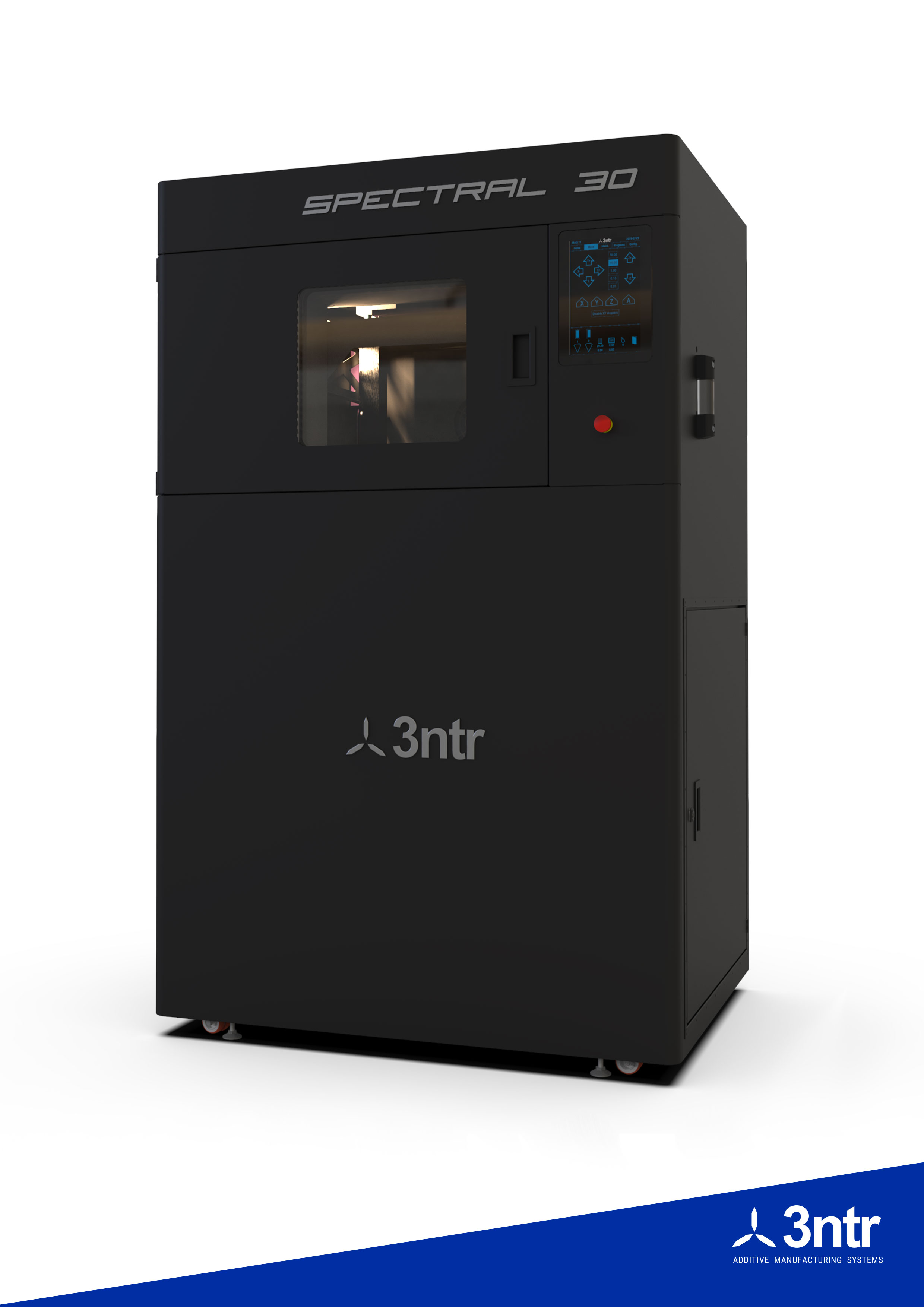3ntr is different from most in 3D printing in that it is a family-owned company that has been around for over 60 years. The firm used to make metal and polymer parts for lingerie. Bra underwires and those little bra hooks were their specialties. To stay competitive in a hyper-competitive market the company started to design and develop its own specialized equipment 20 years ago. Specific manufacturing machinery was created by Ilaria and Davide, sons of founder and father Josè Ardizzoia. Later they started to sell this equipment to erstwhile competitors. As many machine builders making specialized machines have found, 3D printing is a solution for them in creating low production run parts for their machines. The company, therefore, started to order 3D printed parts from services before making 3D printers to make parts for their own machines. Since 2013 the Italian company has been on the 3D printer market.
3ntr machines aren’t pretty. Even though they’re Italian, no designers have been harmed in making a 3ntr printer. They’re heavy, beasts of machines. You wouldn’t want one to drop on your foot. If you ever see one at a show look inside of it its the heaviest duty thing I’ve seen this side of an Arburg. Most companies would want something daintier, prettier and shinier. 3ntr is not most companies though, it makes 3D printer production systems. Most companies wouldn’t spend nearly all their development efforts on reliability and making their machines suitable for printing 24/7. Most companies also don’t have over “30 machines producing parts at Airbus.”
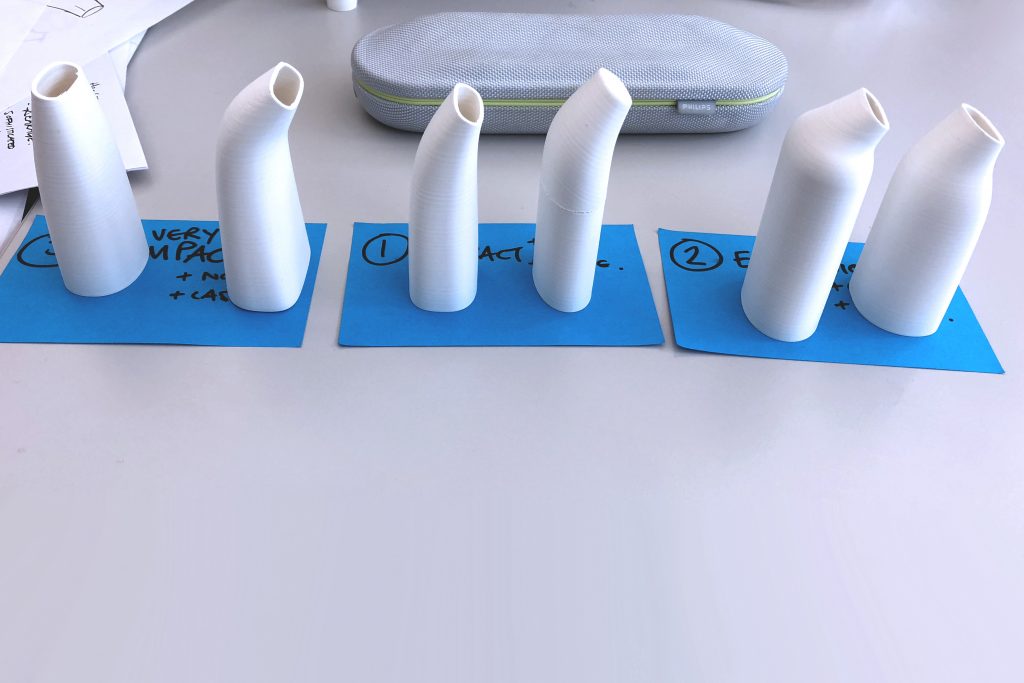
Prototypes made by Frog Design.
`We spoke to Davide Ardizzoia who now owns the company together with his sister on how the present is treating this firm whose values are rooted in the past. A tour of their systems already finds us knee-deep in features for a particular kind of customer, brushless motors, water cooling, dynamic drying temperatures, remote control operation of all major controls and even a gCode command to open the door. The latest system the Spectral 30 is a three-phase machine that gives it more power output for heating and in 30 minutes lets chamber temperatures hit 180. Build trays are removable and replaceable and you could but don’t have to use PEI sheets lowering costs.

End use mass spectometer part made on a 3ntr
Davide says that “we first started making 3D printers ourselves because our suppliers we late.” “We were already at this time a textile and mechatronic engineering company” or a “textile company with 4 Solidworks licenses.” “We wanted a 24/7 platform” and “after months of testing” focussed on their initial system which was focussed on “the correct dimensioning of parts.” He agrees that “3ntr machines are built like tanks” and “even though we recommend people service their machines regularly have had clients that have run machines since 2016 continuously and now are bringing them in for service.” Their customers vary from “a lot of automotive, robotics, machine-building and packaging companies” to “fashion companies”, 3ntr even has “30 machines producing parts at Airbus.” Most of 3ntr’s “customers are 3D printing 24/7.” The company has won 3D printer shoot outs in being compared to over 20 other systems. When it wins the key determinant is reliability and long term 24/7 operation. Davide even says “our machines are not the most advanced” but “they are the most reliable.” For true industrial applications and manufacturing Davide believes that this will let them succeed. “When you are dealing with companies lies are shortsighted” and “you will be found out” because of this and their values they’ve always been a straight shooter and have avoided the hype.
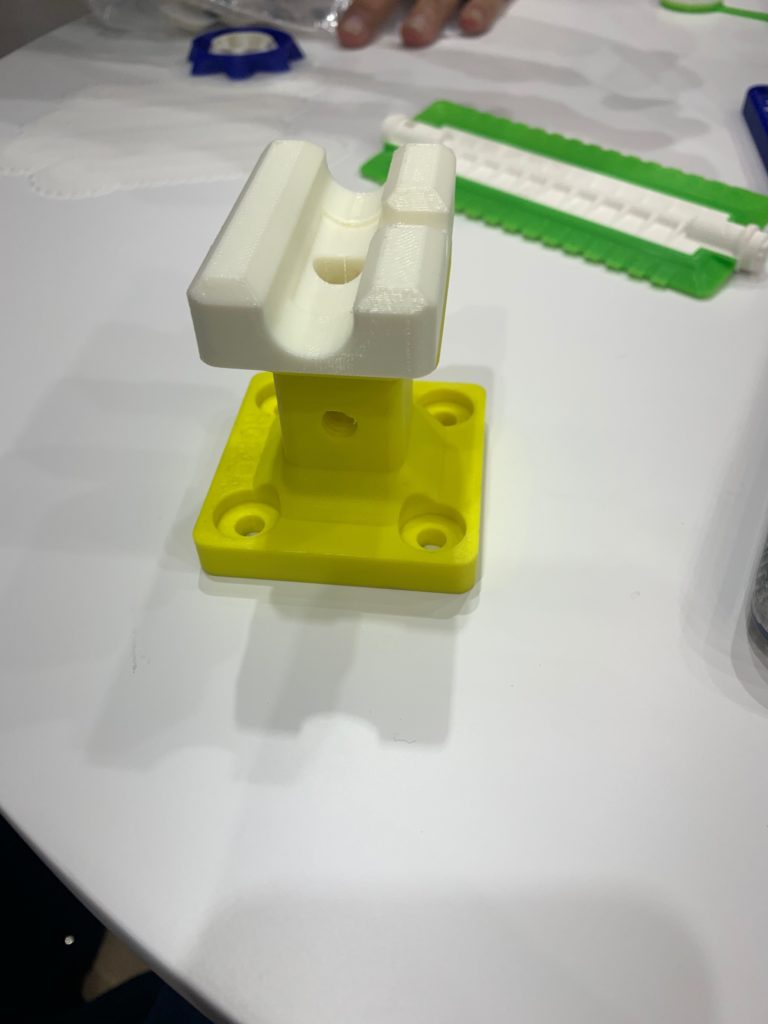
One thing the company has developed is 3D printing with support and two build materials which lets them simultaneously print flexible materials such as TPU/TPE and hard materials at the same time. This doesn’t seem anything new but the parts shown at 3nrt are true mixes with TPU mixed in between layers of harder materials letting them operate much like gradient parts would. Flexible and hard materials in a single part are important to them for making such parts as robot grippers.
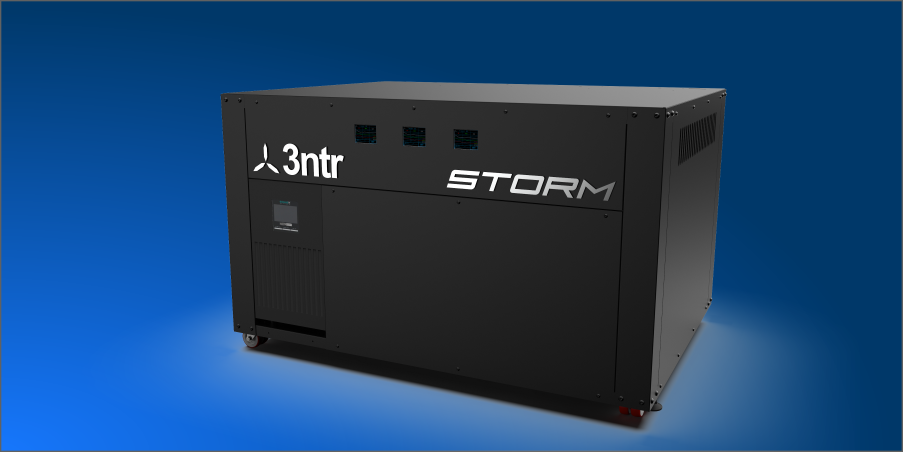
The Storm filament dryers.
Davide sees 3ntr’s role as helping customers secure supply. Some of his clients in services and machine-building have been able to secure new orders because of the flexibility that 3D printing afforded them. One client in “gasket head containers 3D printed these over the weekend while competitor was still looking at how to make the molds and do in-mold injection. This helped the 3ntr client the order.” Other applications bring manufacturing back to Europe or make components in Europe viable again. Furniture and furniture components is something being printed on 3ntr machines as are Croc prototypes. “Difficult to print parts are now cheaper and faster than getting them in Asia” and ” a move to 3D printing could move back manufacturing to Europe” in his opinion. He feels that this is especially true “with manufacturing no longer only being big numbers..small lot sizes and variation…and mass customization” will all help make 3D printing even more important. Additionally “manufacturers can get freedom from 3D printing.”
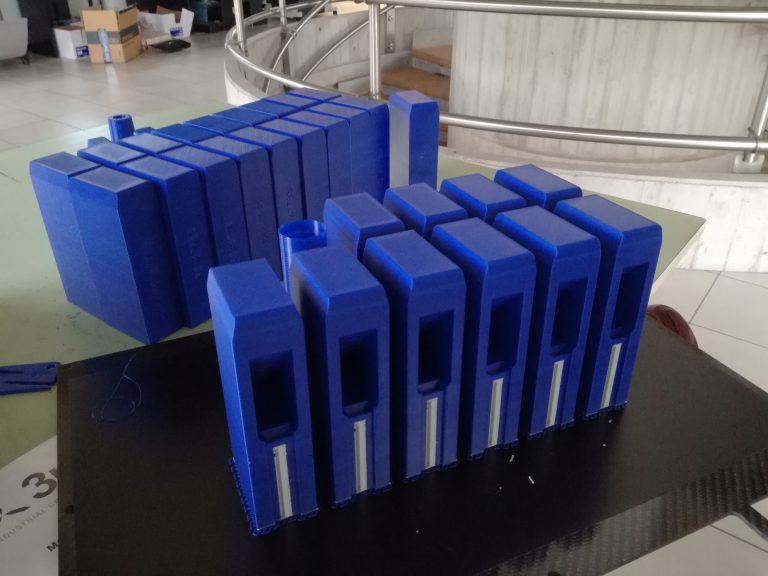
End use parts for packaging machine company Goglio
The company’s previous business was a “shit business” says Davide, with suppliers being squeezed” and “having to make a 1000 rings for a Euro.” He much prefers the 3D printing business. He’s very happy with his customers and fascinated by what they make. He feels its a good choice having moved from spings and underwires to “machines that make parts for Formula 1 and help companies win races.”
The post Interview Davide Ardizzoia of 3ntr “Most of our customers are 3D printing 24/7” appeared first on 3DPrint.com | The Voice of 3D Printing / Additive Manufacturing.


